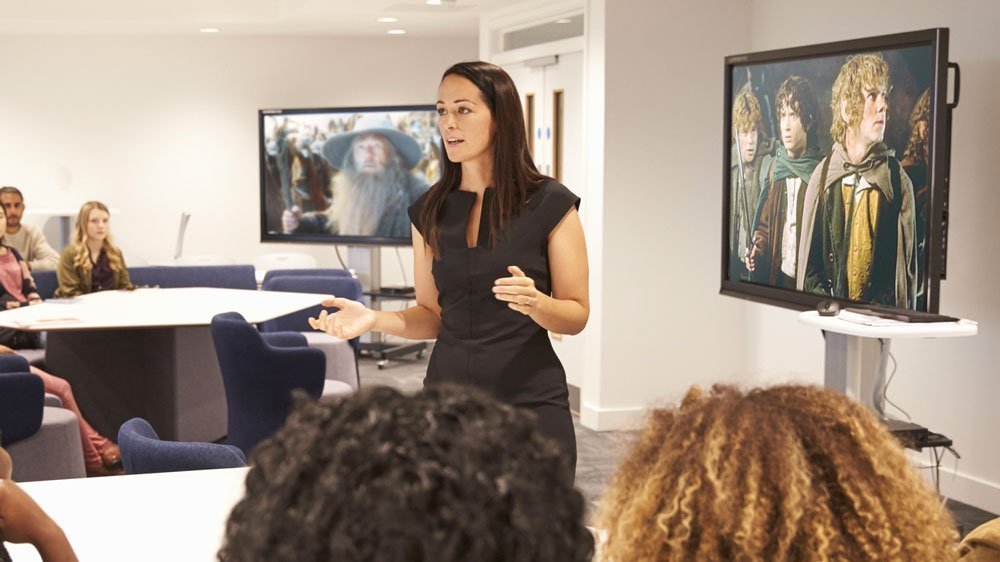Every educator is faced with the challenge of keeping students motivated and participating in lessons. When speaking to a long-time friend and educator about her best ideas for student engagement, without hesitation, she replied, “Bring in some pop culture for real-life learning!” But I wasn’t convinced that integrating Twitter posts or hip-hop music in class would result in successful learning experiences. What does successful integration of pop culture in the classroom even look like? What about the inappropriate content found in pop culture? What about the disconnect between the pop culture of my generation and that of my students’ generation? With so many questions, I turned to research to help guide my decision.
Engage the Culture
In an article for Edweek, educator Mark Hauser wrote in support of pop culture, expressing the need to acknowledge what students are being exposed to, specifically through music. “We cannot sit back and let our students passively digest material,” asserts Hauser. “Instead, teachers should actively engage their students in discussions about the controversial material bombarding them.”
Rather than shy away from it, teachers can use the material as a means of teaching ethics and morality. One example is to use “clean” versions of popular songs. These versions edit out the explicit language, but inappropriate themes remain, resulting in music that can provide an excellent jumping-off point for a discussion on comprehension skills, values, and current world events all in one lesson. Similarly, popular but wholesome TV shows can also be used as a safe way to integrate pop culture in school. YouTube’s “Great Big Story,” PBS’s “Wild Kratts,” and “Design Squad Nation” all present educational content housed in a medium that is highly entertaining and perfect for budding brains.
In film, several popular movies explore such themes as hope, gratitude, and choice and consequence, notably found in the famous “Charlie and the Chocolate Factory;” in Bethany Hamilton’s courageous encounter with a shark in “Soul Surfer;” and in Hayao Miyazaki’s animated film, “Spirited Away.” Themes such as grace, sacrifice, and salvation, can be explored through “The Chronicles of Narnia,” “The Lord of the Rings” trilogy, and the ever-popular “Harry Potter” series.
Teachers often work with tedious rubrics or meticulous core standards, which may include canonical literature or technical jargon. These, to many students, seem disconnected from their own experiences and are comprised of cultural concerns which are foreign to them. But what can bridge this gap is pop culture. Popular YouTube channels, podcasts, and apps such as Instagram can be connected to curricula of many kinds to generate interest, comprehension, and retention of concepts. Pop culture, then, can bring together the knowledge that students bring to the classroom with what we aim to teach them.
Pop Culture in the Classroom
Moving from the research to implementation, high school English teacher Eli Nolde of Oregon offered a creative idea of fusing pop culture with literature. When attempting to use an excerpt from Nathaniel Hawthorne for a “read aloud, think aloud” activity, he found students rolling their eyes and slouching down into their chairs. He tried again, this time opting for a text unfamiliar to him but known to his students: the Call of Duty game manual. The students were put in the expert seat as they assisted Nolde in comprehending the guide to this military-themed video game. Through this exercise, students built up their metacognitive skills and worked out a constructive model for navigating difficult reading throughout the year.
Teachers can draw upon the advertising that students are barraged with daily on the Internet and TV by having them bring in copies of print ads or play clips of popular commercials in class. Students can discuss the psychology behind the ads and whether they are effective. This exercise can even cover history classes as comparisons between historical advertisements, and contemporary ones will likely spark conversation on culture and gender expectations.
Another excellent way to infuse lessons with pop culture comes from Renee Hobbs, founder of the Media Education Lab at Temple University and author of Digital and Media Literacy: Connecting Culture and Classroom. Hobbs built a fun curriculum based on iCarly, a wildly popular Nickelodeon sitcom. In these fun lessons, students analyzed the personalities of the various characters and then created a chart to categorize the five different types of humor in the show: slapstick, visual, insults, wordplay, and running gags. All this with a medium very enjoyable to kids of many ages.

Students also have an opportunity to learn about pop culture around the globe. Classes covering world geography or foreign languages can use famous icons to connect to the countries they are studying as well as acquire vocabulary to describe internationally recognized symbols. For example, everyone has heard of the Eiffel Tower, many have seen Harajuku fashion in magazines, and students can most likely identify a photo of the Sydney Opera House. This makes it relatively easy to have students describe such icons while introducing the absolute location information or linguistic vocabulary associated with each.
Ultimately, I found that there is plenty of research to suggest that teachers should welcome popular culture into their classrooms with open arms. However you decide to implement it, popping some pop culture in the classroom can harness student engagement and direct their thinking toward lenses of ethics, biology, history, and cultural awareness. They probably still won’t be crazy about those pop quizzes, though.
Want to improve classroom management at your school? Watch a free demo today.

